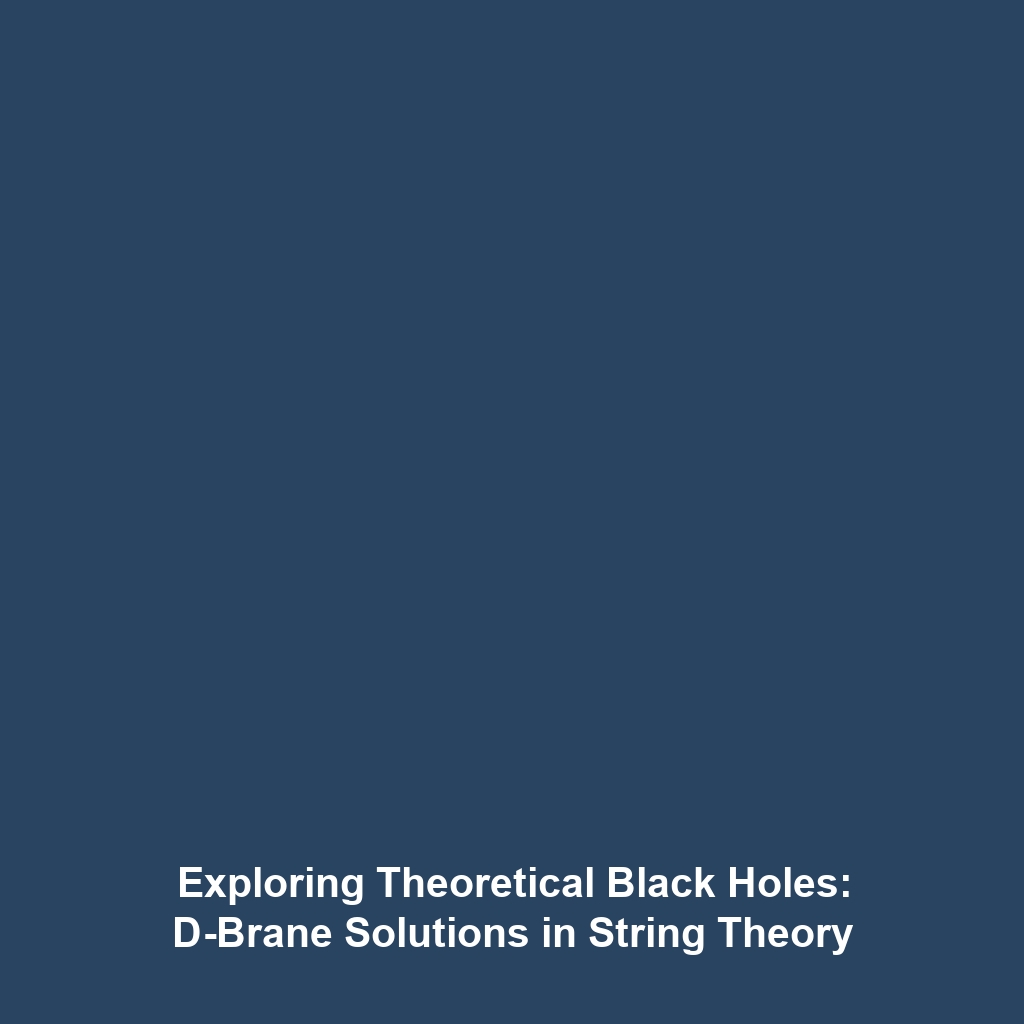Theoretical Black Holes in String Theory: Understanding D-Brane Solutions
Category: Black Holes
Topic: Theoretical black holes in string theory (e.g., D-brane solutions).
Introduction
The study of theoretical black holes in string theory, particularly through the lens of D-brane solutions, has revolutionized the understanding of black holes in modern physics. These concepts stretch the boundaries of traditional black hole theories, offering new insights into their formation, properties, and role in the universe. String theory, with its intricate mathematical framework, provides a unique perspective on black holes, suggesting that they may fundamentally alter our comprehension of spacetime.
Key Concepts
D-Branes Explained
D-branes are essential elements within string theory, acting as surfaces on which open strings can end. These structures play a crucial role in the formation of black holes in a string theoretic context. Understanding D-brane dynamics is vital to comprehending how certain black hole solutions come into existence.
How They Fit into Black Holes
D-brane solutions contribute significantly to black hole physics, allowing for the formulation of models that exhibit properties akin to traditional black holes, yet are fundamentally described by string theory principles. This intersection emphasizes the importance of theoretical black holes in string theory within the broader category of black holes.
Applications and Real-World Uses
The implications of theoretical black holes in string theory, such as D-brane solutions, extend beyond mere mathematical curiosity. Some of the significant applications include:
- Understanding Quantum Gravity: Research into these black holes aids in addressing quantum gravitational issues.
- String Cosmology: Investigations into the early universe’s dynamics may involve D-branes contributing to inflationary models.
- Holographic Principle: D-branes offer insight into the holographic principle, elucidating the relationship between gravity and quantum field theories.
Current Challenges
The field also faces several challenges that hinder the deeper understanding of theoretical black holes in string theory:
- Challenges of numerical simulations of black hole dynamics.
- Issues in reconciling string theory predictions with observational data from astrophysics.
- Limitations in the mathematical framework that restrict model development.
Future Research and Innovations
The next generation of research into theoretical black holes in string theory promises to unveil novel insights and technological advancements:
- Enhanced Analytical Techniques: New theories and methods for exploring D-brane configurations are anticipated.
- Experimental Validation: Future collaboration between theoretical frameworks and observational tests may confirm predictions around black hole physics.
- Interdisciplinary Research: Combining insights from cosmology, particle physics, and quantum information theory may lead to breakthroughs.
Conclusion
The exploration of theoretical black holes in string theory, particularly through D-brane solutions, holds immense potential for comprehending black holes’ mysterious nature. As researchers continue to navigate this complicated terrain, the insights gleaned will not only clarify existing theories but also drive future innovations. For additional information on related topics, consider exploring articles on Black Holes and String Theory.
